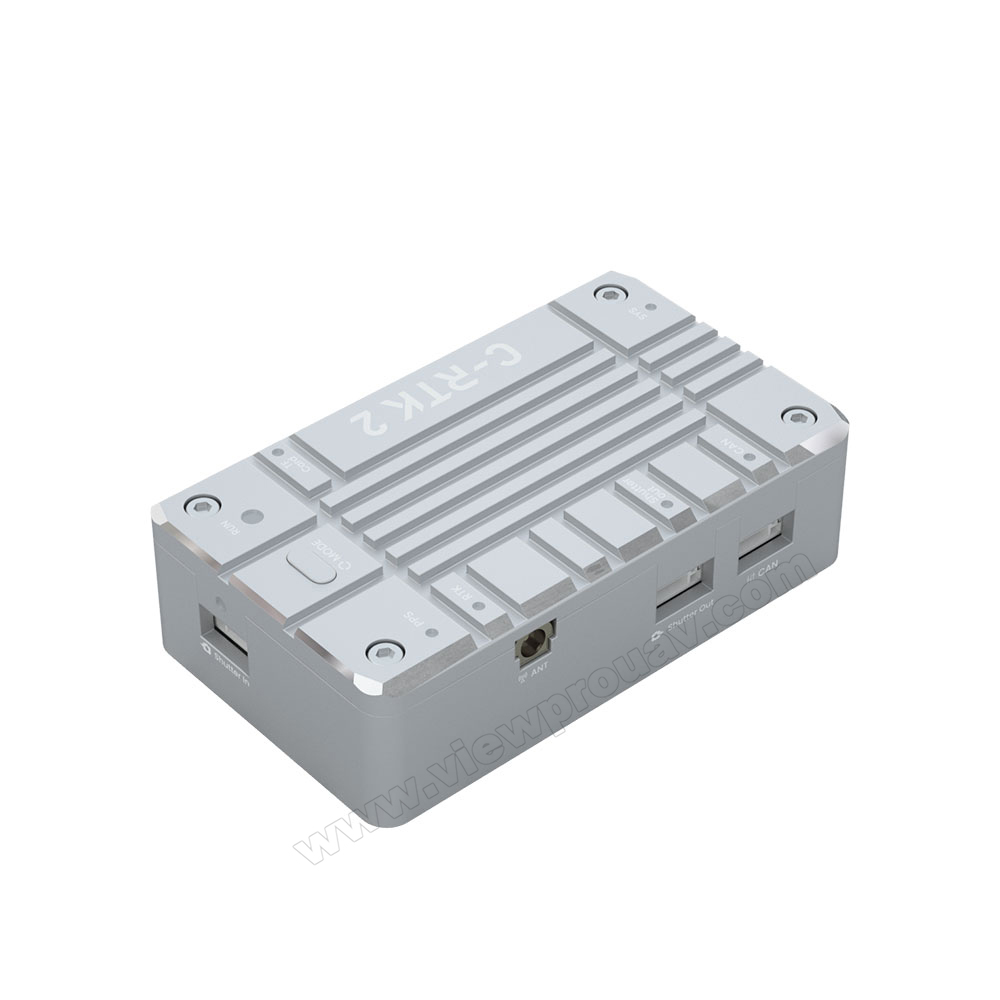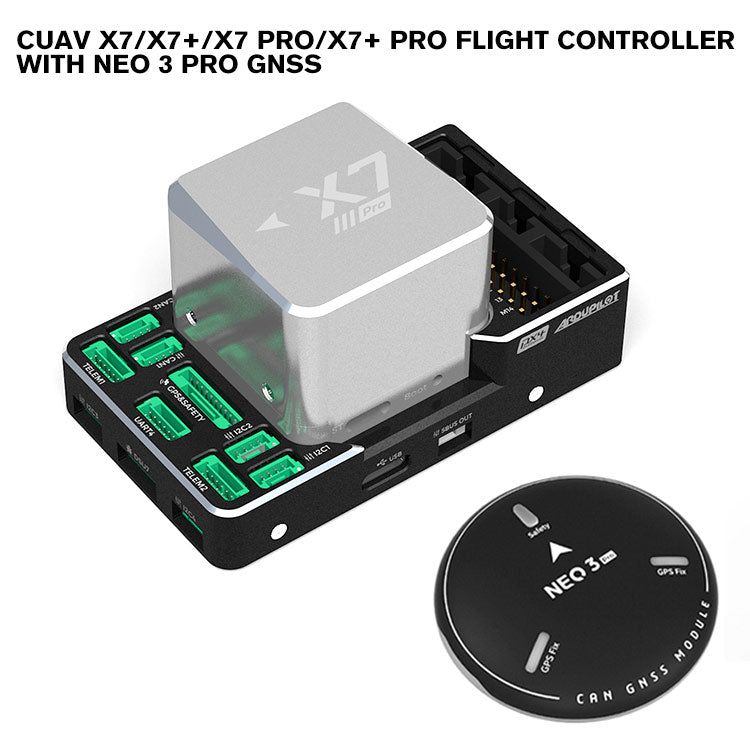Boost Drone Efficiency with SparkNavi Drone Flight Controller and GNSS/INS Made in Taiwan
Boost Drone Efficiency with SparkNavi Drone Flight Controller and GNSS/INS Made in Taiwan
Blog Article
Discovering the Duty of Drone Trip Controllers in Enhancing Flight Stability and Navigating Effectiveness
The innovation of drone innovation has dramatically increased the importance of trip controllers, which work as the brain of these airborne automobiles. By incorporating real-time information from a variety of sensing units, flight controllers improve trip security and navigation efficiency, making sure that drones can run efficiently even in complex settings. This discussion will discover the essential components that add to these renovations, along with the effects for the future of autonomous flight. What innovations lie ahead that could additionally transform the capacities of drone trip controllers?

Understanding Flight Controllers
Trip controllers are indispensable parts in the performance of drones, acting as the brains that manage and maintain flight procedures. These advanced devices process information from different sensors, including accelerometers, gyroscopes, and GPS, to make certain that the drone preserves its desired trip path. The trip controller analyzes this information and performs commands based upon pre-defined algorithms, making it possible for the drone to react to environmental changes, such as wind or obstacles.
The main function of a trip controller is to preserve security during trip. It accomplishes this by making real-time modifications to the drone's electric motors and control surfaces, guaranteeing balance and control. Furthermore, modern flight controllers include innovative features such as waypoint navigating, enabling automated flight courses and improved functional performance.
Understanding the style of flight controllers is essential for both specialists and enthusiasts. As technology advancements, flight controllers have actually come to be extra portable and qualified, integrating fabricated knowledge to enhance decision-making processes and adjust to complicated flight situations.
Trick Components of Flight Security
Attaining optimal trip stability in drones counts on several essential elements that function in performance to make certain regulated and smooth operations. Central to this stability is the trip controller itself, which processes data from various sensing units to preserve the desired flight perspective. This includes accelerometers and gyroscopes that determine movement and orientation, permitting real-time adjustments to the drone's placement.
An additional essential part is the electronic speed controllers (ESCs), which manage the power provided to the motors. By carefully adjusting motor speeds in reaction to flight controller commands, ESCs aid keep balance and combat disturbances brought on by wind or abrupt movements.
Additionally, the layout of the drone's frame plays an essential duty in trip security. A well-structured structure minimizes vibrations and improves the overall wind resistant account, adding to smoother flight attributes. Lastly, the integration of innovative formulas within the flight controller help in predictive modifications, guaranteeing a adaptable and receptive flight experience.
Together, these elements create a cohesive system that improves a drone's stability, enabling precise handling and enhanced efficiency in various trip conditions.
Navigation Performance Techniques
Performance in navigation is essential for enhancing drone procedures, particularly in intricate atmospheres. Efficient navigating strategies boost the ability of drones to pass through tough surfaces and avoid barriers, thus boosting functional efficiency and safety.
One popular method is the execution of innovative GPS and inertial measurement units (IMUs) that offer accurate place monitoring and positioning information. These modern technologies permit drones to compute optimum flight paths in real-time, taking into account different factors such as wind problems and possible challenges.
One more strategy entails using algorithms for path preparation and optimization. Formulas such as A * and Dijkstra's algorithm can be released to identify one of the most reliable path while decreasing power usage and trip time. Additionally, integrating maker discovering designs can allow drones to adaptively gain from their atmospheres, improving navigating capacities with experience.

Effect On Autonomous Drones
The combination of sophisticated navigation strategies has actually greatly changed the abilities of self-governing drones, enabling them to operate with better freedom and precision. SparkNavi drone flight controller and GNSS/INS made in taiwan. These enhancements are largely connected to advanced flight controllers that use real-time data processing and sensing unit combination, allowing drones to browse complicated environments seamlessly
The influence on autonomous drones extends past plain navigating; it encompasses boosted challenge avoidance, boosted stability during vibrant problems, and increased goal dependability. By leveraging algorithms that integrate device discovering and synthetic knowledge, drones can adapt to transforming situations, making informed decisions that optimize their flight courses while lessening dangers.
In addition, the implementation of durable trip controllers has promoted the execution of intricate tasks, such as airborne evaluations, distribution services, and agricultural surveillance, with minimal human treatment. This capability not just improves procedures however likewise lowers human error, thereby improving total security.
Therefore, the functional scope of self-governing drones has actually expanded considerably, making them crucial tools in different markets. Their capacity to perform effectively in varied circumstances underscores the essential function that progressed flight controllers play fit the future of unmanned airborne systems.
Future Patterns in Trip Control
Regularly, innovations in trip control technology are positioned to redefine the landscape of drone operations in the coming years. Arising trends suggest a considerable change towards improved artificial intelligence (AI) integration, making it possible for trip controllers to refine real-time information extra successfully. This development will certainly assist in improved decision-making capabilities, their website allowing drones to adjust to dynamic environmental conditions autonomously.
Moreover, the implementation of device learning formulas is expected to enhance predictive maintenance, consequently lessening downtime and expanding the lifecycle of drone parts. This aggressive method to upkeep will certainly be important as drone applications increase throughout different industries, from link agriculture to logistics.

.jpg)
Lastly, improvements in safe communication protocols will deal with safety and regulatory concerns, making certain that drones can operate effortlessly in congested airspaces (SparkNavi drone flight controller and GNSS/INS made in taiwan). Jointly, these trends direct towards a future where flight control systems are not only smarter and extra efficient however likewise capable of operating securely in a significantly incorporated airspace
Verdict
To conclude, drone flight controllers are indispensable to enhancing trip security and navigation effectiveness via the innovative processing of sensor information. By maintaining optimal flight mindsets and using innovative algorithms for path optimization and challenge evasion, these controllers substantially add to the autonomy and functional security of drones. As technology remains to advance, further developments in flight control systems are prepared for, guaranteeing enhanced performance and broadened capacities in the world of unmanned airborne cars.
By incorporating real-time information from an array of sensors, trip controllers boost trip security and navigating effectiveness, making sure that drones can operate efficiently also in complicated settings.Trip controllers are important elements in the performance of drones, serving as the brains that handle and maintain flight important site procedures. In addition, contemporary flight controllers integrate sophisticated features such as waypoint navigating, allowing for automated trip paths and enhanced functional efficiency.
Central to this stability is the trip controller itself, which processes data from numerous sensing units to keep the preferred flight mindset.In conclusion, drone trip controllers are indispensable to boosting flight stability and navigating effectiveness through the advanced processing of sensor data.
Report this page